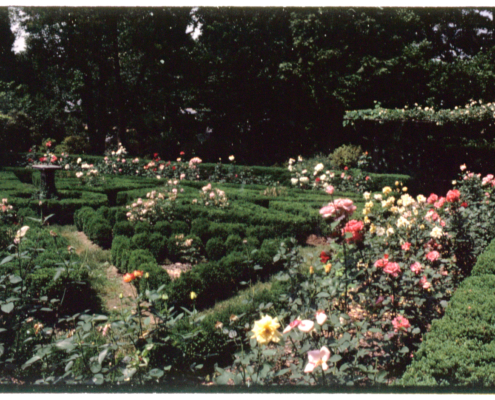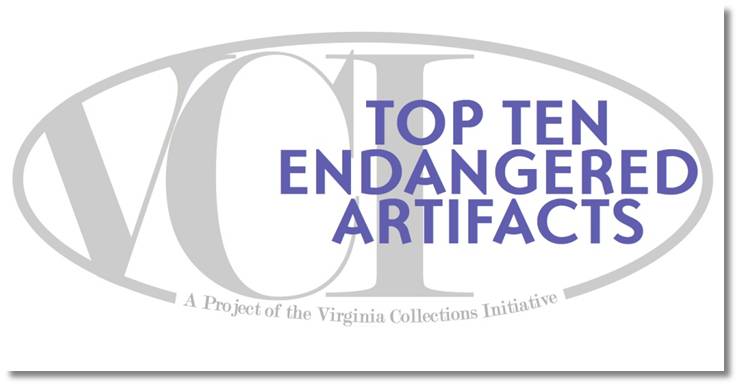Director Leslie Buhler to Retire, Leaving Tudor Place Strengthened
January 22, 2015
![]()
A Change in Leadership
Leslie L. Buhler has announced she will retire as Executive Director of Tudor Place at the end of June 2015 after 15 years of transformational leadership. Since 2000, Leslie created on the historic site an engaging and educational modern museum serving a diverse audience of Washington-area residents, visitors to the nation’s capital, and a worldwide digital audience. A professional search for her successor is underway.
 Tudor Place was completed in 1816 by Thomas Peter and his wife Martha Custis Peter, a granddaughter of Martha Washington, and is noted for its architecture, archive, and extensive collections, including more than 200 items owned by Martha and George Washington. Now a National Historic Landmark on five and a half acres in Georgetown, the estate had been open to the public 12 years when Leslie took the helm. Her innovations and accomplishments included establishing regular tour hours and appropriate zoning as a permanent museum; building a rich schedule of education programs; undertaking archaeological explorations into the site’s past; and transferring many museum operations outside of the historic house so it could be properly preserved and interpreted.
Tudor Place was completed in 1816 by Thomas Peter and his wife Martha Custis Peter, a granddaughter of Martha Washington, and is noted for its architecture, archive, and extensive collections, including more than 200 items owned by Martha and George Washington. Now a National Historic Landmark on five and a half acres in Georgetown, the estate had been open to the public 12 years when Leslie took the helm. Her innovations and accomplishments included establishing regular tour hours and appropriate zoning as a permanent museum; building a rich schedule of education programs; undertaking archaeological explorations into the site’s past; and transferring many museum operations outside of the historic house so it could be properly preserved and interpreted.
“I’ve experienced great professional and personal satisfaction in advancing one of the greatest house museums in the nation’s capital, bringing attention to the extraordinary collection and archive it holds, and engaging the public with wonderful historic and cultural resources unique to Tudor Place,” Leslie said. “I look forward to the next chapter in my life knowing that the museum is stronger and poised to successfully complete a capital campaign to ensure its future as a 21st century museum.”
Assessing, Repairing, Readying for the Future

When Leslie came to Tudor Place, it badly needed repair and restoration. First tackling deferred maintenance and undertaking studies to assess restoration needs, she led a forward-thinking effort to develop a Master Preservation Plan to secure all the site’s historic and cultural assets. A first phase of work on the National Historic Landmark house was funded by a $3.5-million campaign funded in part by awards from Save America’s Treasures and the D.C. Government. In addition, Leslie advanced conservation of the landscape, collection, and archive and also built a strong, competent staff charged with continuing the museum’s momentum.
“Tudor Place has benefited enormously from Leslie’s outstanding leadership and engagement with the community,” said Geoffrey B. Baker, President of the Board of Trustees. “She has led the institution through a major assessment and planning process and developed an educational component that engages young and old with the powerful lessons of American history and culture. It is with profound gratitude that we wish Leslie well.”
Building Audiences, Collections, and the Institution
 From early in her tenure, Leslie made it a priority to increase and diversify the visitor pool while enlarging the museum’s core supporters, and she broadened the museum’s reach into the local community through a lively education program. These efforts substantially increased visits by Washington-area children, families, young adults, and seniors. The dynamic school program introduced under her leadership now reaches 3,000 children each year.
From early in her tenure, Leslie made it a priority to increase and diversify the visitor pool while enlarging the museum’s core supporters, and she broadened the museum’s reach into the local community through a lively education program. These efforts substantially increased visits by Washington-area children, families, young adults, and seniors. The dynamic school program introduced under her leadership now reaches 3,000 children each year.
Augmenting the collection, Peter family members gave several significant gifts during Leslie’s tenure. These include a collection of rare books from the original library of Martha and Thomas Peter and a William G. Webster pocket watch that Martha and George Washington gave Eleanor Calvert upon her marriage to Martha Washington’s son, John Parke Custis.
Leslie’s contributions also include judicious management in expanding the museum’s budget, increasing reserve funds, and raising monies from private and public sources to increase the capacity of the museum’s conservation, education and outreach programs.
|
|
| Thank you for your support of Tudor Place. |









































